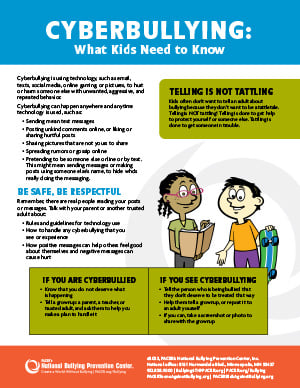In today's digital landscape, social media has become an integral part of childhood and adolescence. While these platforms offer incredible opportunities for connection, learning, and creativity, they also present significant challenges and risks that parents must navigate carefully. As we move through 2025, the importance of social media safety for kids has never been more critical.
Recent studies indicate that over 95% of teens have access to smartphones, and the average child receives their first social media account by age 12. This digital native generation faces unprecedented online challenges, from cyberbullying and privacy concerns to exposure to inappropriate content and contact with online predators. As parents, educators, and caregivers, understanding these risks and implementing effective safety measures is essential for protecting our children's digital well-being.
Why Social Media Safety Matters More Than Ever
This comprehensive guide will equip you with the knowledge, tools, and strategies needed to create a safer online environment for your children while still allowing them to benefit from the positive aspects of social media engagement.
Table of Contents
- 1. Understanding Social Media Risks for Children
- 2. Age-Appropriate Social Media Guidelines
- 3. Cyberbullying Prevention and Response
- 4. Essential Parental Control Tools and Apps
- 5. Teaching Digital Citizenship and Online Ethics
- 6. Platform-Specific Safety Measures
- 7. Communication Strategies for Parents
- 8. Recognizing Warning Signs and Red Flags
- 9. Emergency Response and Reporting
- 10. 2025 Trends and Future Considerations
Understanding Social Media Risks for Children

The digital landscape presents a complex web of opportunities and dangers for young users. Understanding these risks is the first step in creating effective protection strategies for your children. Social media platforms, while designed to connect people and share experiences, can expose children to various forms of harm that parents must be aware of and prepared to address.
Primary Online Threats Children Face
Cyberbullying and Harassment
Online harassment affects approximately 37% of children, with social media being the primary platform where bullying occurs. Unlike traditional bullying, cyberbullying can follow children home and continue 24/7.
Online Predators
Predators use social media to identify, groom, and exploit children. They often pose as peers and gradually build trust before attempting to meet in person or request inappropriate content.

Privacy and Data Security Concerns
Children often lack the understanding of how their personal information can be collected, stored, and potentially misused by social media platforms and third parties. Many young users freely share personal details, location information, and family data without considering the long-term implications.
Key Privacy Risks Include:
- Oversharing personal information in profiles and posts
- Location tracking and geotagging in photos
- Data collection by platforms for advertising purposes
- Third-party apps accessing social media accounts
- Permanent digital footprints affecting future opportunities
Exposure to Inappropriate Content
Social media algorithms can expose children to content that is age-inappropriate, violent, sexually explicit, or promotes harmful behaviors. This exposure can occur even when children follow age-appropriate accounts, as content can be shared, recommended, or appear in comments and advertisements.
The algorithmic nature of social media feeds means that once a child interacts with certain types of content, they may be shown increasingly extreme or inappropriate material. This can include content promoting self-harm, eating disorders, substance abuse, or extremist ideologies.

Mental Health and Self-Esteem Impacts
Research consistently shows correlations between excessive social media use and mental health issues in children and teenagers. The constant comparison with others, seeking validation through likes and comments, and exposure to idealized representations of life can lead to anxiety, depression, and low self-esteem.
The addictive nature of social media platforms, designed to maximize engagement through intermittent reinforcement, can lead to compulsive usage patterns that interfere with sleep, school performance, and real-world relationships.
Mental Health Warning Signs:
- Withdrawal from family and friends
- Dramatic mood changes after social media use
- Sleep disruption due to late-night scrolling
- Declining academic performance
- Expressions of inadequacy or negative self-comparison
- Anxiety when unable to access social media
Age-Appropriate Social Media Guidelines

Establishing age-appropriate guidelines for social media use is crucial for protecting children while allowing them to develop digital literacy skills progressively. Different developmental stages require different approaches to online safety and supervision.
Ages 6-9: Foundation Years
Children in this age group are naturally curious about technology but lack the cognitive development to understand online risks fully. During these foundation years, focus should be on supervised exploration and basic digital citizenship concepts.
Recommended Approach for Ages 6-9:
- No independent social media access
- Supervised use of kid-friendly platforms (YouTube Kids, PBS Kids)
- Introduction to basic online safety concepts through games and stories
- Teaching the importance of asking permission before going online
- Establishing "no technology" zones and times
Ages 10-12: Transition Phase
This transition phase is critical as children begin to express interest in mainstream social media platforms. However, most platforms have a minimum age requirement of 13, and children this age still need significant guidance and supervision.
During this phase, children can begin to understand more complex concepts about online behavior, privacy, and the permanence of digital content. This is an ideal time to establish family rules and expectations about future social media use.

Ages 13-15: Early Teen Years
At 13, children can legally create accounts on most social media platforms, but this doesn't mean they're emotionally or cognitively ready for unrestricted access. Early teens are particularly vulnerable to peer pressure, cyberbullying, and making poor decisions about what to share online.
Guidelines for Ages 13-15:
- Gradual introduction to approved platforms with parental oversight
- Regular discussions about online experiences and challenges
- Clear consequences for inappropriate online behavior
- Friend/follower approval process
- Time limits and device-free periods
- Privacy settings review and maintenance
Ages 16-18: Increasing Independence
Older teens require a balance between protection and preparation for adult independence. While they may resist heavy-handed supervision, they still benefit from guidance and open communication about online experiences.
This age group faces unique challenges, including college admissions officers and potential employers reviewing their social media presence, making digital reputation management increasingly important.
Critical Considerations for Ages 16-18:
- Digital footprint impact on college and job applications
- Increased exposure to adult content and activities
- Relationship formation and dating app considerations
- Financial scams and identity theft risks
- Cyberstalking and harassment from peers or strangers
Cyberbullying Prevention and Response

Cyberbullying represents one of the most pervasive and harmful risks children face on social media platforms. Unlike traditional bullying, cyberbullying can follow victims home, occur 24/7, and reach much larger audiences, amplifying the psychological damage. Understanding how to prevent, recognize, and respond to cyberbullying is essential for protecting children's mental health and well-being.
Understanding Modern Cyberbullying
Cyberbullying has evolved significantly with new technologies and platforms. Modern cyberbullying can include traditional harassment, but also encompasses more sophisticated forms such as social exclusion, impersonation, sharing private information (doxing), and coordinated harassment campaigns.
The anonymous nature of many platforms and the ability to create fake accounts has made cyberbullying more complex and harder to address. Additionally, the permanence of digital content means that harassment can be screenshot, saved, and reshared long after the original incident.
Types of Cyberbullying to Watch For:
- Direct harassment: Mean comments, threats, or insults sent directly to the victim
- Social exclusion: Deliberately excluding someone from online groups or activities
- Impersonation: Creating fake accounts to pretend to be the victim
- Sharing private content: Posting embarrassing photos or private conversations
- Rumor spreading: Sharing false or damaging information about someone
- Cyberstalking: Persistent monitoring and harassment across multiple platforms
Prevention Strategies for Parents
Preventing cyberbullying requires a proactive approach that combines open communication, education, and appropriate supervision. Parents play a crucial role in creating an environment where children feel safe reporting problems and seeking help.

Establishing clear family rules about online behavior and consequences helps children understand expectations and boundaries. These rules should cover both how to treat others online and how to respond when someone treats them poorly.
Family Cyberbullying Prevention Plan
- Open Communication: Create regular opportunities to discuss online experiences without judgment
- Education: Teach children about empathy, digital citizenship, and the impact of online words
- Modeling: Demonstrate respectful online behavior in your own social media use
- Monitoring: Maintain appropriate oversight of your child's online activities
- Support Network: Build relationships with other parents and school personnel
Recognizing the Signs of Cyberbullying
Children who are experiencing cyberbullying may not always report it directly to parents. Understanding the warning signs can help parents identify when their child needs support and intervention.
Warning Signs of Cyberbullying Victimization:
- Sudden withdrawal from social media or technology
- Emotional distress after using devices
- Reluctance to discuss online activities
- Changes in sleep patterns or appetite
- Declining academic performance
- Loss of friends or social connections
- Expressions of helplessness or depression
- Self-harm or suicidal ideation
Effective Response Strategies
When cyberbullying occurs, a swift and appropriate response is crucial for protecting the victim and addressing the situation effectively. The response should be proportional to the severity of the bullying and may involve multiple strategies.
Documentation is critical in cyberbullying cases. Parents should help children screenshot or save evidence of harassment before reporting or blocking users, as this information may be needed for school or legal interventions.
Step-by-Step Response Protocol:
- Document: Screenshot and save all evidence of the cyberbullying
- Support: Provide emotional support and reassurance to your child
- Block: Block the bully on all relevant platforms
- Report: Report the behavior to the social media platform
- School Contact: Notify school administrators if the bully is a classmate
- Professional Help: Consider counseling if the impact is severe
- Legal Action: Consult with authorities for serious threats or continued harassment
Teaching Children to Be Digital Upstanders
Empowering children to be positive forces online helps create safer digital communities for everyone. Digital upstanders are individuals who speak up against cyberbullying and support victims when they witness online harassment.
Teaching children to be upstanders involves helping them understand when and how to intervene safely, when to seek adult help, and how to support friends who are experiencing cyberbullying. This approach transforms children from passive bystanders into active protectors of their online community.
Essential Parental Control Tools and Apps

Parental control tools serve as important safety nets in your comprehensive approach to social media safety. While they should never replace open communication and education, these tools can provide valuable oversight, content filtering, and usage management capabilities that help protect children from various online risks.
Understanding Different Types of Parental Controls
Modern parental control solutions offer a wide range of features designed to address different aspects of online safety. Understanding these categories helps parents select the most appropriate tools for their family's needs and their children's ages and maturity levels.
Content Filtering
Blocks inappropriate websites, images, and content based on categories such as violence, adult content, gambling, and social media platforms.
Time Management
Controls when and how long children can access devices or specific applications, including social media platforms.
Activity Monitoring
Tracks browsing history, app usage, and social media activity to provide insights into children's online behavior.
Location Tracking
Monitors device location for safety purposes and can send alerts when children arrive at or leave designated areas.
Top-Rated Parental Control Solutions for 2025
The parental control software market has evolved significantly, with many solutions now offering specialized features for social media monitoring and management. Here are the most effective and highly-rated options available for families in 2025.

Recommended Parental Control Apps
Qustodio - Best Overall
Comprehensive monitoring across all devices with excellent social media tracking, time controls, and detailed reporting. Ideal for families with children of various ages.
Bark - Best for Social Media Monitoring
Advanced AI-powered monitoring that scans texts, emails, and social media for potential issues without invading privacy. Excellent for detecting cyberbullying and inappropriate content.
Circle Home Plus - Best for Network-Level Control
Router-based solution that manages all devices on the home network, providing comprehensive time limits and content filtering for the entire family.
Screen Time (iOS) / Family Link (Android) - Best Free Options
Built-in parental controls from Apple and Google that provide basic time management, app restrictions, and purchase controls at no additional cost.
Platform-Specific Parental Controls
Major social media platforms have developed their own parental control and safety features. Understanding and utilizing these built-in controls provides an additional layer of protection and demonstrates to children that the platforms themselves recognize the importance of safety.
Instagram Family Tools:
- Time limits and break reminders
- Activity dashboard for parents
- Content filtering and sensitive content controls
- Private account settings for teens
- Restricted accounts feature
TikTok Family Safety:
- Digital Wellbeing tools and screen time management
- Restricted Mode to limit inappropriate content
- Comment filtering and privacy controls
- Family Pairing for parental oversight
Implementation Best Practices
Successfully implementing parental controls requires careful planning, clear communication, and ongoing adjustment as children grow and demonstrate increased responsibility. The goal is to provide appropriate protection while gradually building independence and trust.
Transparency about monitoring is crucial for maintaining healthy family relationships. Children should understand what is being monitored, why these measures are in place, and how they can earn increased privacy and freedom over time.
Balancing Protection and Privacy:
- Explain the purpose and scope of monitoring to your children
- Adjust controls as children demonstrate maturity and responsibility
- Focus on safety rather than controlling every aspect of online activity
- Regularly review and update settings as platforms and risks evolve
- Consider children's age, maturity, and individual circumstances
- Maintain open dialogue about online experiences and challenges
Limitations and Considerations
While parental control tools are valuable components of a comprehensive safety strategy, they have limitations that parents must understand. No technical solution can replace the importance of education, communication, and building trust with children about their online activities.
Children may find ways to circumvent parental controls, especially as they become more technologically sophisticated. This reality emphasizes the importance of education and communication as primary safety strategies, with parental controls serving as supportive tools rather than complete solutions.
Teaching Digital Citizenship and Online Ethics

Digital citizenship encompasses the responsible and ethical use of technology and the internet. Teaching children to be good digital citizens is perhaps the most important long-term strategy for ensuring their safety and success in online environments. Unlike technical controls that can be bypassed or become obsolete, strong digital citizenship values and skills remain with children throughout their lives.
Core Principles of Digital Citizenship
Digital citizenship education should begin early and evolve as children grow and encounter new online situations. The core principles provide a framework for making ethical decisions in digital environments and understanding the real-world consequences of online actions.
The Nine Elements of Digital Citizenship
Digital Access
Understanding technology privilege and working to ensure equal access for all
Digital Commerce
Making safe and informed decisions about online purchases and digital transactions
Digital Communication
Understanding appropriate and respectful online communication methods
Digital Literacy
Developing skills to effectively find, evaluate, and use digital information
Digital Etiquette
Learning proper online behavior and courtesy in digital interactions
Digital Law
Understanding legal rights and responsibilities in digital environments
Digital Rights
Knowing and exercising digital rights while respecting others' rights
Digital Security
Protecting personal information and digital identity
Digital Health
Maintaining physical and psychological wellness in digital environments
Age-Appropriate Digital Citizenship Lessons
Digital citizenship education must be tailored to children's developmental stages and cognitive abilities. Young children need concrete, simple concepts, while older children can understand more complex ethical and legal implications of their online behavior.

Elementary Age (6-11): Foundation Building
At this stage, focus on basic concepts of kindness, respect, and safety online. Children this age can understand simple rules and consequences but may not grasp abstract concepts about privacy or long-term consequences.
Key Lessons for Elementary Age:
- Treat others online the same way you would in person
- Never share personal information (name, address, school) online
- Always ask a trusted adult before clicking on links or downloading anything
- Tell a trusted adult immediately if something online makes you uncomfortable
- Understand that not everything you see online is true
Middle School (12-14): Expanding Understanding
Middle school students are beginning to understand more complex social dynamics and can grasp concepts about digital footprints, reputation, and the permanence of online content. This is a critical time for establishing strong digital citizenship habits.
Key Lessons for Middle School:
- Everything you post online creates a permanent digital footprint
- Consider how your posts might affect others before sharing
- Understand the difference between private and public online spaces
- Learn to identify and avoid online scams and misinformation
- Respect intellectual property and understand copyright basics
- Stand up for others who are being treated poorly online
High School (15-18): Advanced Concepts
High school students can understand complex legal, ethical, and social implications of their online behavior. They're also preparing for adult independence, making this an important time to solidify strong digital citizenship values.
Key Lessons for High School:
- Understand how your online presence affects future opportunities
- Learn about digital privacy laws and your rights online
- Develop skills for evaluating online information credibility
- Understand the impact of algorithms on what you see online
- Learn about digital activism and positive online engagement
- Prepare for professional online presence and networking
Teaching Empathy in Digital Spaces
One of the biggest challenges in digital citizenship education is helping children understand that there are real people behind screens who can be hurt by online actions. The physical distance and anonymity of online interactions can reduce empathy and make it easier for children to behave in ways they wouldn't consider in face-to-face situations.
Teaching digital empathy involves helping children pause and consider the impact of their words and actions on others before posting, commenting, or sharing content. This includes understanding how tone can be misinterpreted in text-based communication and learning to give others the benefit of the doubt in ambiguous situations.
Strategies for Teaching Digital Empathy
- The Golden Rule Online: Encourage children to treat others online as they would want to be treated
- Pause Before Posting: Teach children to wait and re-read before sending messages when they're emotional
- Consider the Human: Remind children that there's a real person with feelings behind every profile
- Think About Impact: Help children consider how their posts might affect the intended recipient and others who might see them
- Practice Perspective-Taking: Encourage children to imagine how they would feel if someone posted similar content about them
Building Critical Thinking Skills
In an era of information overload and misinformation, teaching children to think critically about online content is essential for their digital citizenship development. Children need skills to evaluate the credibility of sources, identify bias, and distinguish between fact and opinion in digital media.
Critical thinking skills also help children make better decisions about what to share, who to trust online, and how to respond to challenging situations. These skills are particularly important for social media use, where algorithms can create echo chambers and expose children to misleading or manipulative content.

Platform-Specific Safety Measures
Each social media platform presents unique features, risks, and safety considerations. Understanding the specific characteristics and potential dangers of popular platforms enables parents to provide targeted guidance and implement appropriate safety measures for each platform their children use.
Instagram Safety for Young Users
Instagram's visual-focused platform presents particular challenges related to body image, self-esteem, and exposure to inappropriate content. The platform's emphasis on appearance and lifestyle can be particularly harmful to adolescents who are still developing their self-identity.
Instagram Safety Settings:
- Set account to private to control who can see posts
- Enable comment filters to block inappropriate language
- Turn off read receipts for direct messages
- Disable location services and remove location tags from posts
- Review and adjust story settings for privacy
- Use the "Restrict" feature for problematic followers
TikTok Considerations and Controls
TikTok's algorithm-driven content delivery and short-form video format can quickly expose children to inappropriate content or lead them down concerning content paths. The platform's addictive nature and the ease of content creation also present unique challenges.
TikTok-Specific Risks:
- Rapid exposure to inappropriate content through the algorithm
- Dangerous challenge trends that can cause physical harm
- Easy access for predators to contact young users
- Pressure to create increasingly extreme content for views
- Significant time consumption due to addictive design
Snapchat Privacy and Safety Features
Snapchat's disappearing message feature can create a false sense of security, leading children to share content they might not otherwise share. The platform's location-sharing features also present unique privacy and safety risks.
YouTube and Video Content Safety
YouTube's vast content library and recommendation algorithm can expose children to inappropriate content, even when they start with age-appropriate videos. The platform's comment sections can also be sources of harassment or inappropriate contact.
YouTube Safety Measures:
- Use YouTube Kids for younger children
- Enable Restricted Mode to filter out potentially mature content
- Turn off comments on your child's videos
- Review and delete inappropriate comments regularly
- Teach children not to respond to suspicious comments or messages
- Monitor viewing history and subscriptions regularly
Communication Strategies for Parents
Effective communication forms the foundation of any successful social media safety strategy. Creating an environment where children feel comfortable discussing their online experiences, asking questions, and reporting problems is more valuable than any technical control or monitoring system.
Building Trust and Open Dialogue
Trust is essential for effective communication about social media safety. Children who trust their parents are more likely to share their online experiences, report problems, and seek guidance when facing difficult situations online.
Strategies for Building Trust
- Listen Without Judgment: Allow children to share their experiences without immediately criticizing or punishing
- Ask Open-Ended Questions: Use questions like "How did that make you feel?" rather than yes/no questions
- Share Your Own Experiences: Discuss your own social media challenges and mistakes to show you understand
- Regular Check-ins: Make online safety discussions a regular part of family conversation
- Praise Good Decisions: Acknowledge and celebrate when children make good choices online
Age-Appropriate Conversation Starters
Starting conversations about social media safety can feel challenging, especially with children who may be resistant to discussing their online activities. Having a variety of conversation starters appropriate for different ages helps parents initiate these important discussions naturally.
Conversation Starters by Age Group:
Elementary Age (6-11):
- "What was the most interesting thing you saw online today?"
- "If someone online asked you to keep a secret, what would you do?"
- "How can we tell if something we see online is real or fake?"
Middle School (12-14):
- "What's the most popular app among your friends right now?"
- "Have you ever seen someone being mean to others online?"
- "What would you do if someone shared embarrassing information about you?"
High School (15-18):
- "How do you think your online presence might affect your future goals?"
- "What's your strategy for dealing with online drama or conflicts?"
- "How do you verify information you see on social media?"
Recognizing Warning Signs and Red Flags
Early identification of problems is crucial for protecting children from serious harm. Parents who understand warning signs can intervene quickly and provide appropriate support before situations escalate.
Behavioral Warning Signs:
- Sudden secrecy about online activities
- Emotional distress after device use
- Withdrawal from family and friends
- Changes in sleep or eating patterns
- Declining academic performance
- Reluctance to attend school or social events
- Unexplained gifts or money
- New adult "friends" or mentors
Emergency Response and Reporting
When serious safety issues arise, knowing how to respond quickly and effectively can prevent further harm and help ensure appropriate consequences for harmful behavior.
Emergency Response Protocol
- Immediate Safety: Ensure your child's immediate physical and emotional safety
- Document Evidence: Screenshot and save all relevant evidence before it can be deleted
- Report to Platforms: Report violations to the relevant social media platforms
- Contact Authorities: Contact police for threats, exploitation, or other criminal behavior
- Seek Professional Help: Contact counselors or therapists for emotional support
- Follow Up: Monitor the situation and take additional action as needed
2025 Trends and Future Considerations
The social media landscape continues to evolve rapidly, with new platforms, features, and risks emerging regularly. Staying informed about current trends and future developments helps parents adapt their safety strategies to meet new challenges.
Emerging Platforms and Technologies
New social media platforms and features continue to emerge, often gaining popularity among young users before parents become aware of them. Virtual and augmented reality social experiences, AI-powered content creation, and new forms of digital interaction present novel safety considerations.
2025 Technology Trends Affecting Social Media Safety:
- AI-generated content making misinformation more sophisticated
- Virtual reality social spaces creating new forms of harassment
- Increased integration of social media with gaming platforms
- Enhanced deepfake technology raising new safety concerns
- Blockchain-based social platforms with different moderation approaches
- Increased focus on audio-based social media platforms
Legislative and Regulatory Developments
Governments worldwide are implementing new regulations aimed at protecting children online. Understanding these developments helps parents know their rights and the responsibilities of social media companies.
The regulatory landscape in 2025 includes enhanced age verification requirements, stricter data protection for minors, and increased platform liability for child safety. These changes create new protections but also require parents to stay informed about evolving digital rights and responsibilities.
Conclusion: Creating a Safer Digital Future for Our Children
Social media safety for kids requires a comprehensive approach that combines education, communication, appropriate supervision, and ongoing adaptation to new challenges. While the digital landscape presents real risks, it also offers incredible opportunities for learning, creativity, and connection when navigated safely.
The most effective protection comes from building strong relationships with our children, maintaining open communication about their online experiences, and teaching them the skills they need to make good decisions independently. Technology tools and parental controls provide valuable support, but they cannot replace the importance of human connection and guidance.
Key Takeaways for Parents
- Start Early: Begin digital citizenship education before children have their own devices
- Stay Informed: Keep up with new platforms, trends, and safety features
- Communicate Openly: Create an environment where children feel safe discussing online issues
- Balance Protection and Independence: Gradually increase freedom as children demonstrate responsibility
- Lead by Example: Model positive digital citizenship in your own online behavior
- Stay Connected: Maintain relationships with other parents, schools, and community resources
Remember that social media safety is an ongoing process, not a one-time conversation or setup. As children grow and technology evolves, our approaches must adapt to meet new challenges and opportunities. By staying engaged, informed, and supportive, we can help our children navigate the digital world safely and responsibly.
Take Action Today
Protecting your children online starts with taking concrete steps today. Don't wait for a problem to occur before implementing safety measures.
Immediate Steps:
- Have a family discussion about current social media use
- Review privacy settings on all platforms your children use
- Establish clear family rules and consequences
- Research and implement appropriate parental control tools
Ongoing Commitment:
- Schedule regular check-ins about online experiences
- Stay updated on new platforms and safety features
- Connect with other parents and school counselors
- Continue learning about digital citizenship and online safety
For more resources on children's safety and digital citizenship:
Visit Children's Story Tales - Educational ResourcesRelated Articles and Resources
Digital Parenting in 2025: A Complete Guide
Comprehensive strategies for raising children in the digital age
Cyberbullying Prevention: Tools and Strategies
Evidence-based approaches to preventing and addressing cyberbullying
Screen Time Management for Families
Balanced approaches to managing family screen time and digital wellness
